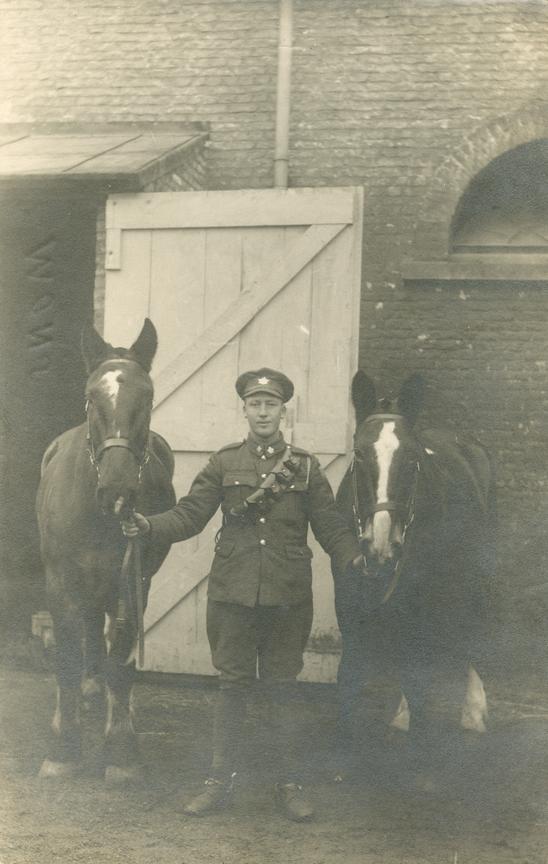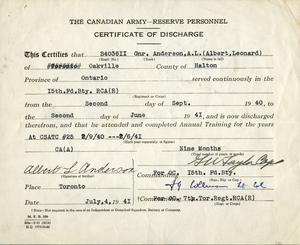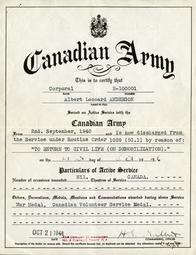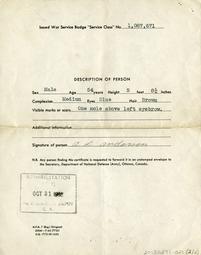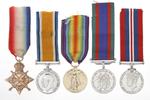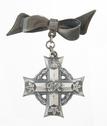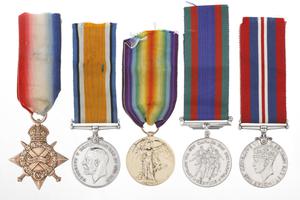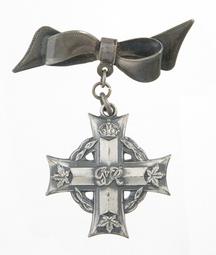Unit
7th Canadian Infantry Battalion (1st British Columbia Regiment)
Branch
Infantry
Service Component
Canadian Expeditionary Force, Canadian Army
Service Number
510973,B403611
birth
1893/06/27
Kent, United Kingdom, England
death
1950/08/07
grave
Gender
Male
Albert Leonard Anderson was born 27 June 1893 in Kent, United Kingdom, to Walter and Jane Anderson. The family emigrated to Canada, and by the time Albert Anderson joined the Canadian Expeditionary Force, they were living in Humber Bay near Toronto. Albert, who at the time listed his occupation as gardener, was assigned to the No. 2 Overseas Canadian Army Service Corps on 22 May 1916 in Toronto.
Private Anderson left Canada for the United Kingdom on 27 September 1916 for training, and then shipped to France to join the Canadian Army Service Corps pool in the 3rd Canadian Division Train in November 1916. By the end of the year he had been assigned to the headquarters of the 7th Canadian Infantry Brigade. At this time the 7th Brigade, which included the Royal Canadian Regiment and Princess Patricia Canadian Light Infantry regiments as well as the 42nd Canadian Infantry Battalion (Royal Highlanders of Canada) and 9th Canadian Infantry Battalion (Edmonton Regiment), was operating in the Arras sector in France. The 7th Brigade, a part of the 3rd Canadian Division, spent the rest of the war in Northern France and Flanders and took part in most of the major campaigns of the Canadian Corps until the Armistice. Anderson appeared to suffer from poor eyesight and was assigned medical category “B” by the army, which meant that he was fit for service in a supporting role at the front but not for front line duty. Private Anderson returned to Canada aboard the SS Carmenia in 1919 and was discharged on 20 March of that year.
Upon discharge from his First World War service, he returned to his residence in Weston, Ontario, where, on 28 June 1920, he married a widow, Emily Castledine (née Pinder). The couple had one son, Lorne. His marriage certificate lists his occupation at the time as lineman helper. Anderson also enlisted in the Second World War and served as a Gunner with the 15th Field Battery, Royal Canadian Artillery, service number B403611. According to his discharge certificate, he served from 2 September 1940 to 2 June 1941. A second discharge certificate shows Corporal Anderson under a different service number, B-100001, in October of 1946 on demobilization. Corporal Anderson passed away on 7 August 1950. As a Memorial Cross was issued in his name, it seems that his death must have been attributed to injuries or illness received during one of the two wars.

